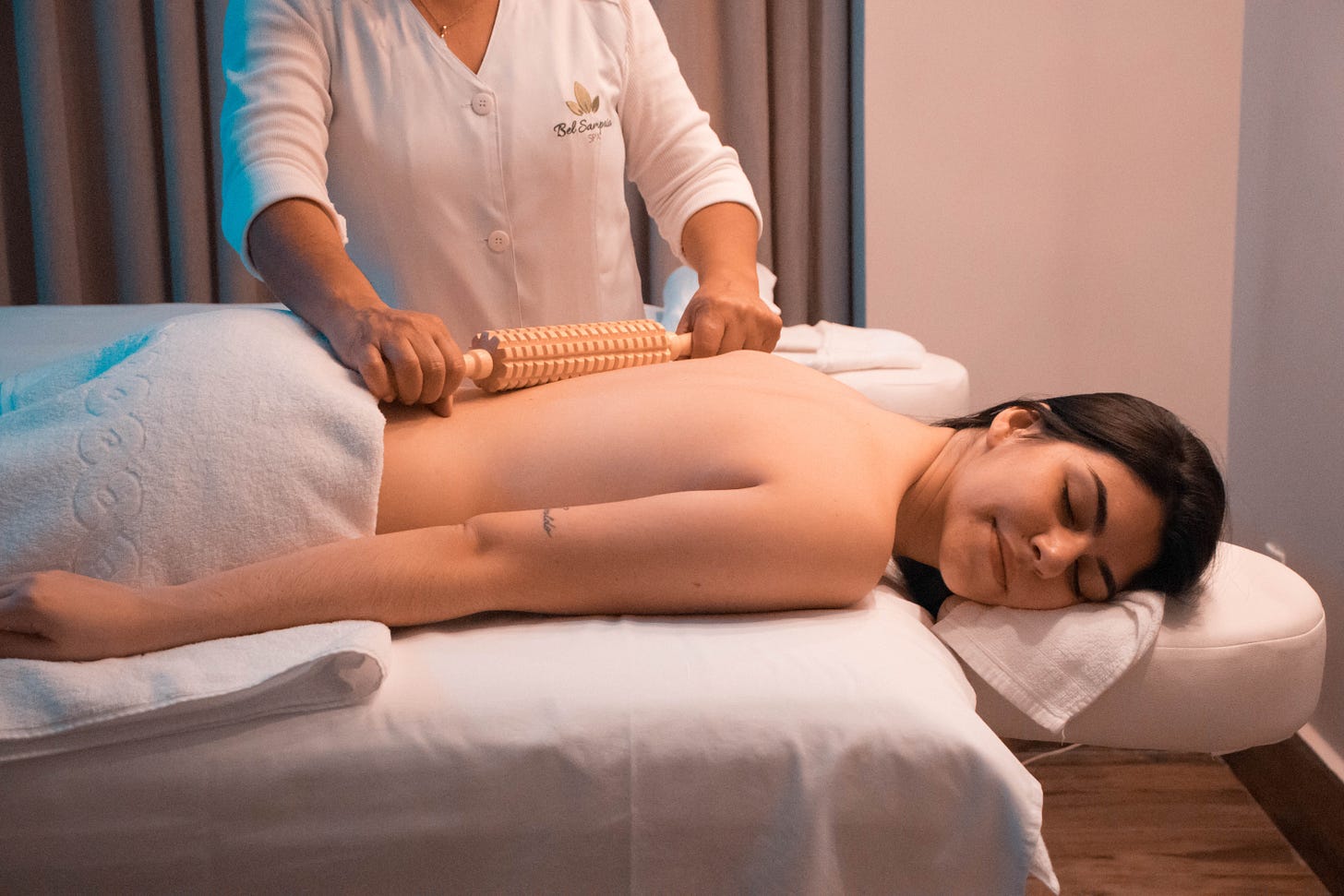Photo by Raphael Lovaski on Unsplash
A few months back I would feel pain in my left thigh after walking for 15 minutes. Sometimes I felt it in my knee, but more often it was coming from closer to my hip. I was hearing stories from my friends about knee replacements and hip replacements. Since walking is the most strenuous form of exercise I indulge in, I was concerned that I might lose even that and thus devolve into a misshapen blob.
My next regular appointment with my doctor was several months away. In the interim, my wife suggested that I pay a visit to Sean, her physical therapist.
Good call! Sean asked a few questions, allowed me to change into shorts and a t-shirt, and then had me lie on his treatment table. He then commenced the laying on of the hands. With vigor and enthusiasm.
“Let me know if something hurts,” he said.
“EEYAIIIIOWW!” My whole body shot upward.
“That’s called a trigger point,” Sean said.
“I may have another name for - EEYAIIIIOWW!” My body made another attempted launch.
What You Knead
Sean continued his manual explorations, and I continued my vertical spasms. “It’s not your knee or your hip,” Sean declared. “The problem is your quadriceps are too tight,” he said, thereby demonstrating that a muscle is the shortest distance between two joints. In my case, they were too short. “Once we loosen up your quads and lengthen them,” he said, “your issues should go away.”
He demonstrated four simple exercises I could do at home, and suggested using a heating pad, as a warm muscle is a happy muscle. “Do you have a foam roller?” he asked. I did not. “How about a rolling pin?”
“Yes. Why?”
“Roll it over your quads when you’re warming up and again when you finish your exercise,” he said. “It will help smooth out the knots.”
Long story short, I had six weekly sessions with Sean, each less painful than the one before, and I began kneading my quads with the rolling pin several times a day. The pain disappeared, it hasn’t returned, and I have stopped worrying about the life expectancy of my knee and hip.
But imagine what would have happened if I had taken my complaints to my physician. Given the way the system works, she would have referred me to an orthopedic specialist, with one of two likely results:
1. After examination, he schedules me for knee surgery, hip surgery, or both.
OR
2. After examination, he laughs raucously, assures me everything is normal, and tells to come back when it really hurts.
In either case, physical therapy saved me time, money, pain, and embarrassment.
The Sum of the Parts
My friend David Shulman, a retired physical therapist and Sean’s mentor, believes when people take their pains to the medical community, they tend to suffer prolonged pain between appointments, wrong diagnoses, needless MRIs, cortisone injections, medications with harmful side effects, and hundreds of wasted hours. What feels like arthritis, for example, may be just a stressed muscle. Starting with a visit to the physical therapist often could save time, money, and aggravation.
I am not knocking doctors. They know what they know, and they know a lot. But obviously the rewards in American medicine go to the specialists. The practitioners of general medicine – family practitioners or geriatricians – are still around, in theory, but your medical encounters are far more likely to feature an internist, a cardiologist, a pulmonologist, a neurologist, an orthopedist, a podiatrist, a psychiatrist, an ear-nose-and-throat doctor, an ophthalmologist, etc. They know all about your parts. They are less able to treat your body as a whole system, or you as a whole person.
Physical therapists know muscles, and they know how to heal them when they become strained, sprained, overused, or injured in other ways. In my experience, they are more apt to take a holistic approach, if only because muscles and tendons and nerves work together, not always in obvious ways. Consider the problem of pain. Pain is a signal from the brain that something is awry. I may feel the pain in my hip, or my knee, or my elbow, but none of those locations may be the real source of the problem, because the nerves like to refer pain elsewhere. My experience with my knee-hip problem is a perfect example.
I trust my doctor, and I’ll continue to keep appointments to monitor my lungs, heart, kidneys, and all the other organs. But when I feel soreness, weakness, or muscle spasms, my first stop is Sean’s treatment table.
For a good article on other good reasons to seek out physical therapy, check out this recent article from AARP's Senior Planet.





Sometimes people rub me the wrong way. My PT guy never does.
When suffering with plantar fasciitis my PCP confided that he never referred patients with foot issues to his brother (a podiatrist). Instead, he sends them to a PT noting that there are so many bones in the foot that you want to avoid surgery at all costs. My pain was a result of super tight hamstrings in my left leg, remedied by stretching and an orthotic. However, I'll keep the rolling pin handy just in case...thanks for the tip!